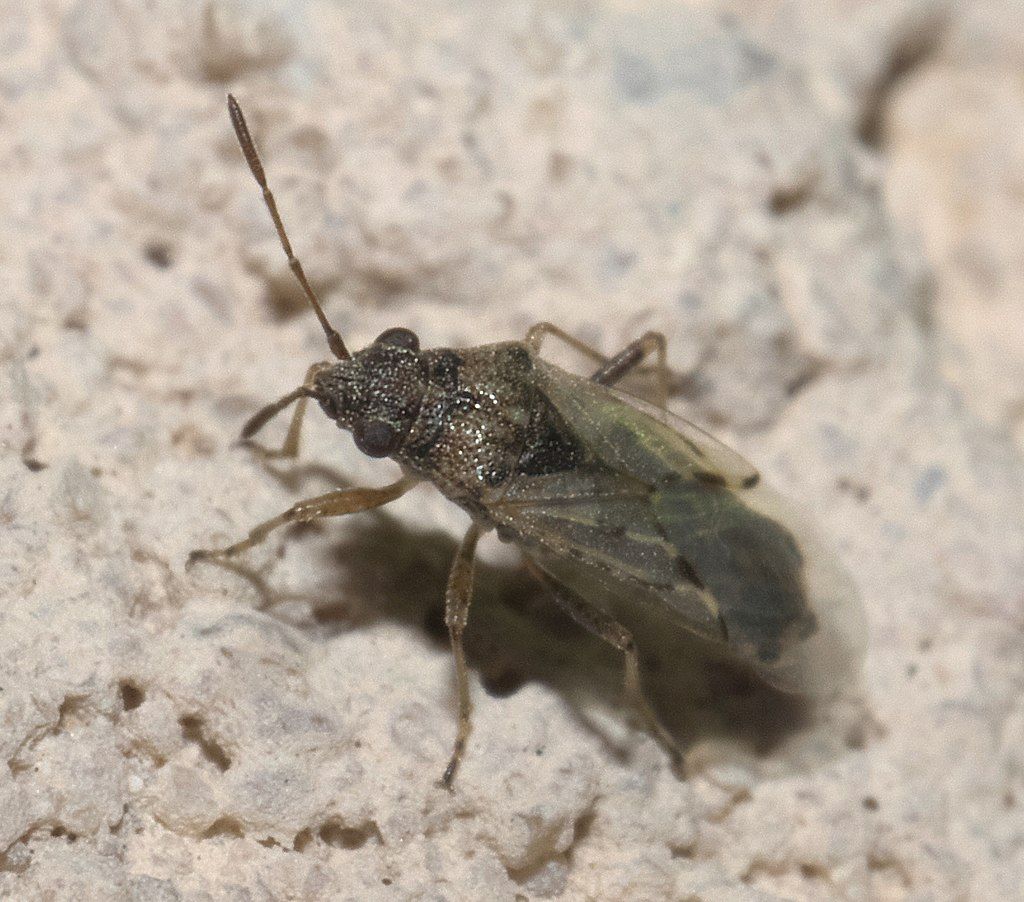
Your lawn is the showpiece of your property. When it’s thick, lush, and green, it’s the type of lawn that the neighbors envy—and you’re proud of that.
Unfortunately, bugs that eat grass (and its roots) may be working against your best efforts.
Oftentimes, lawn pest damage goes unnoticed until it becomes severe. One day your lawn might have looked fine and the next it may be suffering from brown patches. This is a sign that Texas lawn pests may have been feasting—unbeknownst to you!
In Northern Texas, there are 3 main insects that we are most concerned about. Learning more about these Texas lawn pests will help you make wise choices that will prevent them from destroying your lawn.
While there are obviously many different types of lawn pests that might be residing on your property, there are 3 in particular that you should be aware of. That’s because these 3 eat grass (or its roots) and can be destructive to your lawn. These include grubs, chinch bugs, and armyworms.
Let’s take a look at each.
These bugs that eat roots are one of the biggest concerns when it comes to maintaining a healthy lawn. Grubs, which is the collective name for several species of beetles in the larval stage, are tiny but powerful.
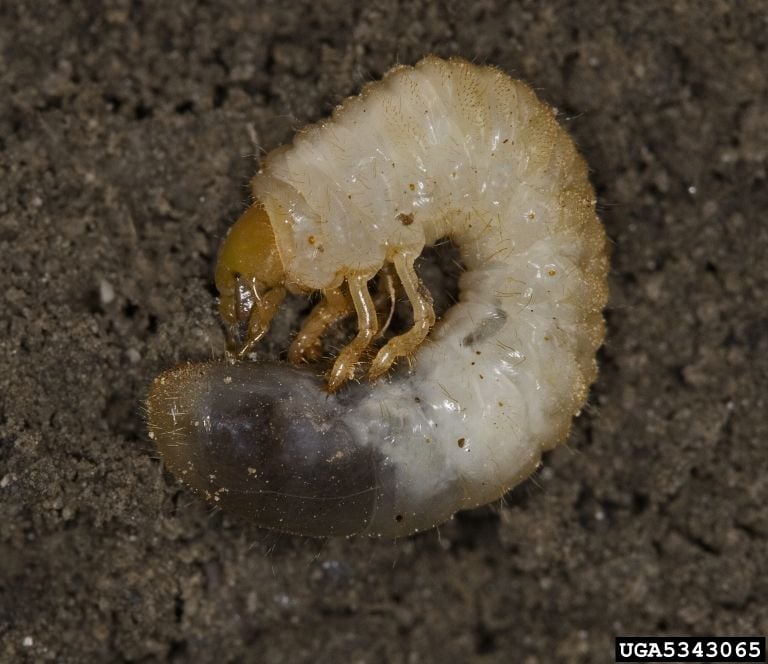
However, because they are feeding beneath the surface of your grass, they can be very difficult to spot. Most of the time people don’t realize they have a grub problem until the damage is severe.
Not all Northern Texas lawns have grubs and there is not necessarily a reason why one lawn is more appealing to grubs than another. But investing in preventative grub control can help protect the health and appearance of your lawn.
Grub prevention can be applied to lawns in the spring season. If you missed that and have found you have a problem with grubs, don’t panic. There are curative treatments that can be applied during grubs active season as well.
However, this after-the-fact method is typically a little more expensive than preventative treatment and may also require re-sodding damaged areas, if it wasn’t caught in time for the grass to recover on its own. Re-sodding can get costly which is why prevention is always ideal when possible.
Chinch bugs are an issue in St. Augustine grass lawns. These small blackish/gray bugs are active in late summer and early fall. Of course, chances are, you’re not going to see them. Since the adults are only ⅙-inch long, they are likely too small for you to take notice. But what you will notice is their damage.
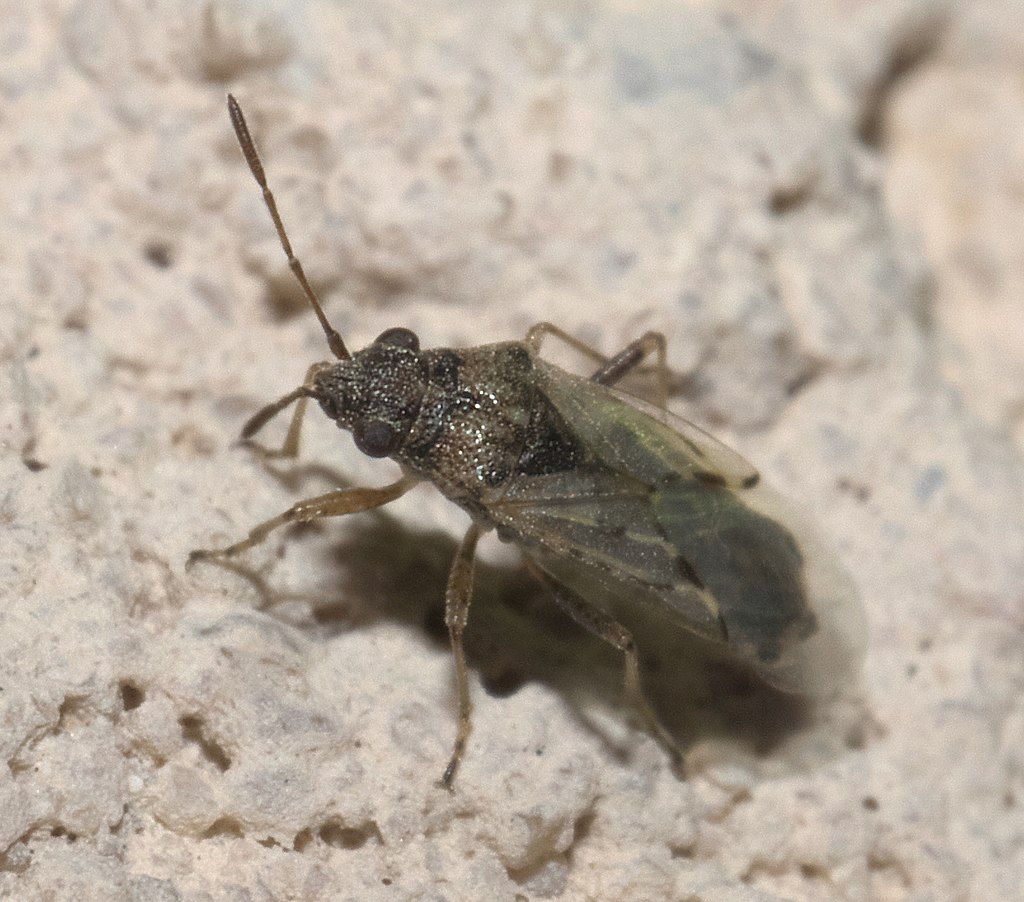
These surface-feeding insects feed on lawns by sucking out plant fluids. This can cause lawns to turn yellow and then brown, and ultimately die if not addressed soon enough.
Chinch bugs can be difficult to find due to their size and their ability to hide. Oftentimes, homeowners spot lawn damage before they ever see a bug. If you have grass that is turning brown, you can perform a visual inspection.
This should be performed on the fringe where the grass is still green because chinch bugs will move out after they’ve consumed an area. Pull apart your thatch layer of grass and watch closely for bug movement.
If you suspect you have a chinch bug problem, there are professional treatments that can help get these Texas lawn pests under control. In addition, removing excess thatch and having the lawn aerated to break up compacted soil will also remove the favorable environment where chinch bugs prefer to live.
Armyworms are the larvae of moths and are larger (full-grown larvae are between 1.5 and 2 inches long) but also tend to be good hiders, hiding in the thatch layer of grass. Armyworms get their name from the fact that they stick together in large groups, like an army.
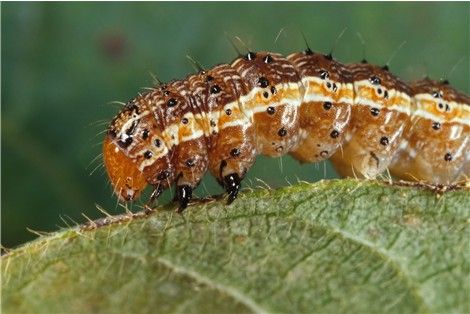
However, this insect is not a “worm” at all, but rather a caterpillar. These caterpillars consume grass quickly and can be highly destructive to a lawn in a matter of days if not addressed.
Due to their highly destructive nature, it’s important to spot armyworms early. You may be clued into their presence by an increased number of birds on your property (as birds eat armyworms). Of course, you’ll also notice armyworm damage. These bugs that eat grass chew on the blades, sometimes eating all the way down to the root. Areas, where grass has been consumed, will begin to die, forming brown patches around the lawn.
At the first sign of an armyworm problem, get in touch with your lawn care professional so that treatment can be started. If armyworm damage is severe, remedial strategies can also be started to repair damaged areas of the lawn.
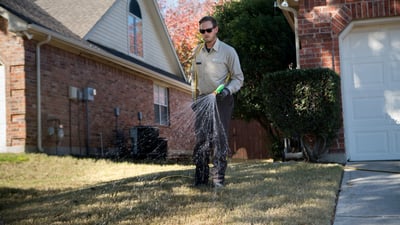 When it comes to bugs that eat grass or its roots, working with a lawn care professional in the Flower Mound, Highland Village, or Lewisville, TX area will pay off in a positive way. While pest problems cannot always be prevented, they can be dealt with swiftly before they have the chance to cause serious damage to the lawn that you love.
When it comes to bugs that eat grass or its roots, working with a lawn care professional in the Flower Mound, Highland Village, or Lewisville, TX area will pay off in a positive way. While pest problems cannot always be prevented, they can be dealt with swiftly before they have the chance to cause serious damage to the lawn that you love.
When working with a professional, you can feel confident that there will be an ongoing “eye” on your property, scouting for problems. Of course, we do realize that with fast-moving pests, sometimes the problem can strike in between visits. In that case, we encourage calling us at the first sign of trouble.
At Grassperson, we believe in partnering with you in order to have the best possible results.
Though Texas lawn pests can be destructive, they won't have much of a chance when visiting a property like yours—where a professional has got your back. That means you can have the peace of mind that your lawn will go on looking like the best on the block.
Want to stop worrying about the risk of Texas lawn pests and other lawn-destroying problems? Get a Free Quote, then you can enjoy the best lawn on the block!
Image sources: lawn grub, chinch bug, armyworm
These Stories on Lawn Care